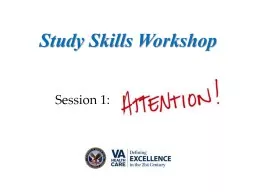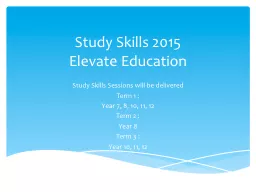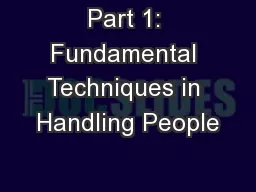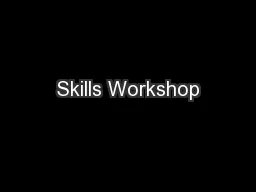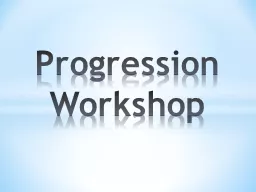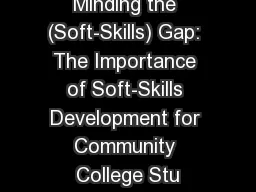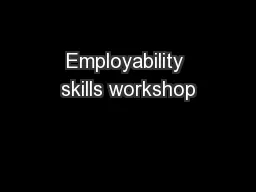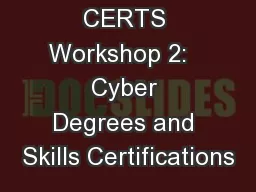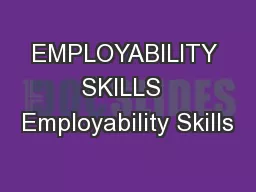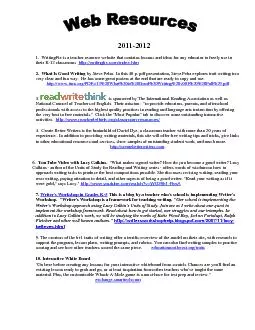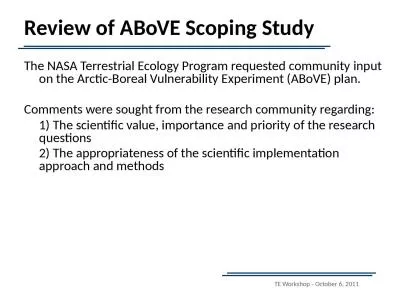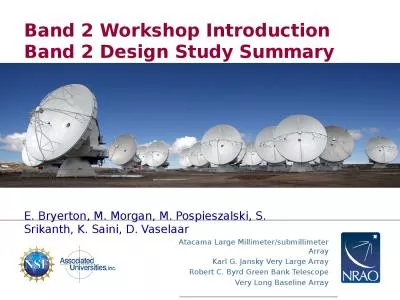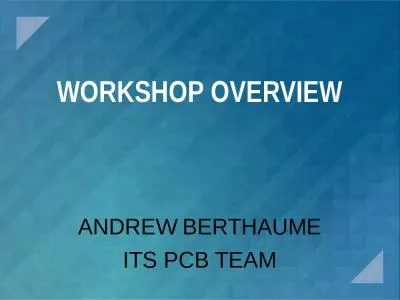PPT-Study Skills Workshop
Author : scarlett | Published Date : 2022-02-16
Session 1 Todays Discussion Topics What is attention Discuss types of attention Discuss factors that contribute to attentional reductions BEFORE a task strategies
Presentation Embed Code
Download Presentation
Download Presentation The PPT/PDF document "Study Skills Workshop" is the property of its rightful owner. Permission is granted to download and print the materials on this website for personal, non-commercial use only, and to display it on your personal computer provided you do not modify the materials and that you retain all copyright notices contained in the materials. By downloading content from our website, you accept the terms of this agreement.
Study Skills Workshop: Transcript
Download Rules Of Document
"Study Skills Workshop"The content belongs to its owner. You may download and print it for personal use, without modification, and keep all copyright notices. By downloading, you agree to these terms.
Related Documents

